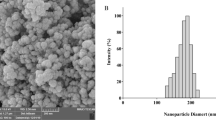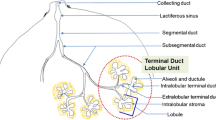Abstract
Curcumin, a biphenyl compound derived from rhizome, is a powerful anti-cancer agent. Emodin is an active component isolated from the root and rhizome of Rheum palmatum that has been widely used in traditional Chinese medicine for the treatment of various diseases. Currently, there are no studies examining the effect of curcumin in combination with emodin on tumor cell growth. In this study, we report for the first time that combined curcumin and emodin administration synergistically inhibits proliferation (MTT assay), survival (flow cytometry), and invasion (transwell migration assay) of breast cancer cells. Synergism is determined by the Chou–Talalay method. Moreover, we demonstrate that miR-34a is upregulated by curcumin and emodin. This microRNA helps mediate the anti-tumor effects of curcumin and emodin by downregulating Bcl-2 and Bmi-1. Our results not only provide insight into the mechanism of synergy between curcumin and emodin in breast cancer cells, but also suggest a new and potentially useful approach for breast cancer therapy.





Similar content being viewed by others
Change history
15 December 2021
A Correction to this paper has been published: https://doi.org/10.1007/s11010-021-04312-0
References
Siegel R, Naishadham D, Jemal A (2012) Cancer statistics, 2012. CA Cancer J Clin 62:10–29
Aguas F, Martins A, Gomes TP, de Sousa M, Silva DP (2005) Prophylaxis approach to a-symptomatic post-menopausal women: breast cancer. Maturitas 52:S23–S31
Chaffer CL, Weinberg RA (2011) A perspective on cancer cell metastasis. Science 331:1559–1564
Rivera E, Gomez H (2010) Chemotherapy resistance in metastatic breast cancer: the evolving role of ixabepilone. Breast Cancer Res 12:S2
Kirsh VA, Chiarelli AM, Edwards SA, O’Malley FP, Shumak RS, Yaffe MJ, Boyd NF (2011) Tumor characteristics associated with mammographic detection of breast cancer in the Ontario breast screening program. J Natl Cancer Inst 103:942–950
Ellisen LW (2011) PARP inhibitors in cancer therapy: promise, progress, and puzzles. Cancer Cell 19:165–167
Tutt A, Robson M, Garber JE, Domchek SM, Audeh MW, Weitzel JN, Friedlander M, Arun B, Loman N, Schmutzler RK, Wardley A, Mitchell G, Earl H, Wickens M, Carmichael J (2010) Oral poly(ADP-ribose) polymerase inhibitor olaparib in patients with BRCA1 or BRCA2 mutations and advanced breast cancer: a proof-of-concept trial. Lancet 376:235–244
Maheshwari RK, Singh AK, Gaddipati J, Srimal RC (2006) Multiple biological activities of curcumin: a short review. Life Sci 78:2081–2087
Sintara K, Thong-Ngam D, Patumraj S, Klaikeaw N (2012) Curcumin attenuates gastric cancer induced by N-methyl-N-nitrosourea and saturated sodium chloride in rats. J Biomed Biotechnol 2012:915380
Kunnumakkara AB, Anand P, Aggarwal BB (2008) Curcumin inhibits proliferation, invasion, angiogenesis and metastasis of different cancers through interaction with multiple cell signaling proteins. Cancer Lett 269:199–225
Yodkeeree S, Ampasavate C, Sung B, Aggarwal BB, Limtrakul P (2010) Demethoxycurcumin suppresses migration and invasion of MDA-MB-231 human breast cancer cell line. Eur J Pharmacol 627:8–15
Gupta SC, Prasad S, Kim JH, Patchva S, Webb LJ, Priyadarsini IK, Aggarwal BB (2011) Multitargeting by curcumin as revealed by molecular interaction studies. Nat Prod Rep 28:1937–1955
Shehzad A, Wahid F, Lee YS (2010) Curcumin in cancer chemoprevention: molecular targets, pharmacokinetics, bioavailability, and clinical trials. Arch Pharm (Weinheim) 343:489–499
Yang CL, Liu YY, Ma YG, Xue YX, Liu DG, Ren Y, Liu XB, Li Y, Li Z (2012) Curcumin blocks small cell lung cancer cells migration, invasion, angiogenesis, cell cycle and neoplasia through Janus kinase-STAT3 signalling pathway. PLoS One 7:e37960
Wang QJ, Cai XB, Liu MH, Hu H, Tan XJ, Jing XB (2010) Apoptosis induced by emodin is associated with alterations of intracellular acidification and reactive oxygen species in EC-109 cells. Biochem Cell Biol 88:767–774
Wang HH, Chung JG (1997) Emodin-induced inhibition of growth and DNA damage in the Helicobacter pylori. Curr Microbiol 35:262–266
Meng G, Liu Y, Lou C, Yang H (2010) Emodin suppresses lipopolysaccharide-induced pro-inflammatory responses and NF-kappaB activation by disrupting lipid rafts in CD14-negative endothelial cells. Br J Pharmacol 161:1628–1644
Huang HC, Chang JH, Tung SF, Wu RT, Foegh ML, Chu SH (1992) Immunosuppressive effect of emodin, a free radical generator. Eur J Pharmacol 211:359–364
Ko JC, Su YJ, Lin ST, Jhan JY, Ciou SC, Cheng CM, Chiu YF, Kuo YH, Tsai MS, Lin YW (2010) Emodin enhances cisplatin-induced cytotoxicity via down-regulation of ERCC1 and inactivation of ERK1/2. Lung Cancer 69:155–164
Shieh DE, Chen YY, Yen MH, Chiang LC, Lin CC (2004) Emodin-induced apoptosis through p53-dependent pathway in human hepatoma cells. Life Sci 74:2279–2290
Li J, Liu P, Mao H, Wanga A, Zhang X (2009) Emodin sensitizes paclitaxel-resistant human ovarian cancer cells to paclitaxel-induced apoptosis in vitro. Oncol Rep 21:1605–1610
Lin SZ, Wei WT, Chen H, Chen KJ, Tong HF, Wang ZH, Ni ZL, Liu HB, Guo HC, Liu DL (2012) Antitumor activity of emodin against pancreatic cancer depends on its dual role: promotion of apoptosis and suppression of angiogenesis. PLoS One 7:e42146
Zhang L, Lau YK, Xia W, Hortobagyi GN, Hung MC (1999) Tyrosine kinase inhibitor emodin suppresses growth of HER-2/neu-overexpressing breast cancer cells in athymic mice and sensitizes these cells to the inhibitory effect of paclitaxel. Clin Cancer Res 5:343–353
Deters M, Hutten H, Kaever V (2012) Synergistic immunosuppressive effects of the mTOR inhibitor sirolimus and the phytochemical curcumin. Phytomedicine S0944–7113:354–356
Hossain MM, Banik NL, Ray SK (2012) Synergistic anti-cancer mechanisms of curcumin and paclitaxel for growth inhibition of human brain tumor stem cells and LN18 and U138MG cells. Neurochem Int 61:1102–1113
Ko JC, Tsai MS, Kuo YH, Chiu YF, Weng SH, Su YC, Lin YW (2011) Modulation of Rad51, ERCC1, and thymidine phosphorylase by emodin result in synergistic cytotoxic effect in combination with capecitabine. Biochem Pharmacol 81:680–690
Su YJ, Tsai MS, Kuo YH, Chiu YF, Cheng CM, Lin ST, Lin YW (2010) Role of Rad51 down-regulation and extracellular signal-regulated kinases 1 and 2 inactivation in emodin and mitomycin C-induced synergistic cytotoxicity in human non-small-cell lung cancer cells. Mol Pharmacol 77:633–643
Chou TC, Talalay P (1984) Quantitative analysis of dose effect relationships: the combined effects of multiple drugs or enzyme inhibitors. Adv Enzyme Regul 22:27–55
Chou TC (2006) Theoretical basis, experimental design, and computerized simulation of synergism and antagonism in drug combination studies. Pharmacol Rev 58:621–681
Entschladen F, Drell TL 4th, Lang K, Joseph J, Zaenker KS (2004) Tumour-cell migration, invasion, and metastasis: navigation by neurotransmitters. Lancet Oncol 5:254–258
Sethi N, Kang Y (2011) Unravelling the complexity of metastasis—molecular understanding and targeted therapies. Nat Rev Cancer 11:735–748
Ghawanmeh T, Thunberg U, Castro J, Murray F, Laytragoon-Lewin N (2011) miR-34a expression, cell cycle arrest and cell death of malignant mesothelioma cells upon treatment with radiation, docetaxel or combination treatment. Oncology 81:330–335
Heinemann A, Zhao F, Pechlivanis S, Eberle J, Steinle A, Diederichs S, Schadendorf D, Paschen A (2012) Tumor suppressive microRNAs miR-34a/c control cancer cell expression of ULBP2, a stress-induced ligand of the natural killer cell receptor NKG2D. Cancer Res 72:460–471
Hermeking H (2010) The miR-34 family in cancer and apoptosis. Cell Death Differ 17:193–199
Li L, Yuan L, Luo J, Gao J, Guo J, Xie X (2013) MiR-34a inhibits proliferation and migration of breast cancer through down-regulation of Bcl-2 and SIRT1. Clin Exp Med 13(2):109–117
Li L, Xie X, Luo J, Liu M, Xi S, Guo J, Kong Y, Wu M, Gao J, Xie Z, Tang J, Wang X, Wei W, Yang M, Hung MC (2012) Targeted expression of miR-34a using the T-VISA system suppresses breast cancer cell growth and invasion. Mol Ther 20:2326–2334
Kasinski AL, Slack FJ (2012) miRNA-34 prevents cancer initiation and progression in a therapeutically resistant K-ras and p53-induced mouse model of lung adenocarcinoma. Cancer Res 72:5576–5587
Liu S, Tetzlaff MT, Cui R, Xu X (2012) miR-200c inhibits melanoma progression and drug resistance through down-regulation of Bmi-1. Am J Pathol 181:1823–1835
Siemens H, Jackstadt R, Hünten S, Kaller M, Menssen A, Götz U, Hermeking H (2011) miR-34 and SNAIL form a double-negative feedback loop to regulate epithelial–mesenchymal transitions. Cell Cycle 10:4256–4271
Nagaraju GP, Aliya S, Zafar SF, Basha R, Diaz R, El-Rayes BF (2012) The impact of curcumin on breast cancer. Integr Biol (Camb) 4:996–1007
Pichu S, Krishnamoorthy S, Shishkov A, Zhang B, McCue P, Ponnappa BC (2012) Knockdown of ki-67 by dicer-substrate small interfering RNA sensitizes bladder cancer cells to curcumin-induced tumor inhibition. PLoS One 7:e48567
Subramaniam D, Ponnurangam S, Ramamoorthy P, Standing D, Battafarano RJ, Anant S, Sharma P (2012) Curcumin induces cell death in esophageal cancer cells through modulating Notch signaling. PLoS One 7:e30590
Carey LA, Perou CM, Livasy CA, Dressler LG, Cowan D, Conway K, Karaca G, Troester MA, Tse CK, Edmiston S, Deming SL, Geradts J, Cheang MC, Nielsen TO, Moorman PG, Earp HS, Millikan RC (2006) Race, breast cancer subtypes, and survival in the Carolina Breast Cancer Study. JAMA 295:2492–2502
Anders CK, Carey LA (2009) Biology, metastatic patterns, and treatment of patients with triple-negative breast cancer. Clin Breast Cancer 9(Suppl 2):S73–S81
Bartel DP (2009) MicroRNAs: target recognition and regulatory functions. Cell 136:215–233
Calin GA, Croce CM (2006) MicroRNA signatures in human cancers. Nat Rev Cancer 6:857–866
Fassan M, Baffa R, Palazzo JP, Lloyd J, Crosariol M, Liu CG, Volinia S, Alder H, Rugge M, Croce CM, Rosenberg A (2009) MicroRNA expression profiling of male breast cancer. Breast Cancer Res 11:R58
Iorio MV, Ferracin M, Liu CG, Veronese A, Spizzo R, Sabbioni S, Magri E, Pedriali M, Fabbri M, Campiglio M, Menard S, Palazzo JP, Rosenberg A, Musiani P, Volinia S, Nenci I, Calin GA, Querzoli P, Negrini M, Croce CM (2005) MicroRNA gene expression deregulation in human breast cancer. Cancer Res 65:7065–7070
Cole KA, Attiyeh EF, Mosse YP, Laquaglia MJ, Diskin SJ, Brodeur GM, Maris JM (2008) A functional screen identifies miR-34a as a candidate neuroblastoma tumor suppressor gene. Mol Cancer Res 6:735–742
Cao L, Bombard J, Cintron K, Sheedy J, Weetall ML, Davis TW (2011) BMI1 as a novel target for drug discovery in cancer. J Cell Biochem 112:2729–2741
Acknowledgments
This work was supported by grants from the Key Program of National Natural Science Foundation of China (No. 31030061), the National Natural Science Foundation of China (No. 81272514 and No. 31100935), the Doctoral Fund of Ministry of Education of China (No. 20090171110078), and the China Postdoctoral Science Foundation (No. 2012M520075).
Conflict of interest
No potential conflicts of interest were disclosed.
Author information
Authors and Affiliations
Corresponding authors
Additional information
Jiaoli Guo and Wenping Li contributed equally to this study.
Rights and permissions
About this article
Cite this article
Guo, J., Li, W., Shi, H. et al. Synergistic effects of curcumin with emodin against the proliferation and invasion of breast cancer cells through upregulation of miR-34a. Mol Cell Biochem 382, 103–111 (2013). https://doi.org/10.1007/s11010-013-1723-6
Received:
Accepted:
Published:
Issue Date:
DOI: https://doi.org/10.1007/s11010-013-1723-6




